Dragon fruit, also known as pitaya, is a vibrant tropical fruit prized for its unique appearance and nutrient-packed flesh. When dried and milled, it becomes dragon fruit (pitaya) powder, a convenient form of this “superfruit” that can be added to smoothies, desserts, and supplements. Unlike fresh fruit, the powder form offers a concentrated source of nutrients and a long shelf life. The deep magenta color of pitaya powder comes from natural pigments like betalains, which act as all-natural colorants in foods. For example, adding just a spoonful of freeze-dried dragon fruit powder can instantly brighten yogurt or cakes with a vivid pink hue.
Dragon fruit powder has a stunning, natural magenta color, due to high levels of water-soluble pigments. These antioxidants not only give it a beautiful hue but also deliver health benefits. In science terms, the pigments and antioxidant compounds (like betalains and vitamin C) make pitaya powder both nutritious and visually striking. Essentially, dragon fruit powder is made by selecting ripe, unblemished dragon fruits (red- or white-fleshed), cleaning them, and then removing the skin. The sweet, juicy flesh is sliced and then dried using methods such as freeze-drying or spray-drying. Once moisture is removed, the dehydrated fruit pieces are finely ground into a uniform powder. Modern production may use freeze-drying for maximum nutrient retention (as this method preserves most vitamins and color), whereas spray-drying is often chosen for cost-effective, large-scale manufacturing.
What Is Dragon Fruit (Pitaya) Powder?
Dragon fruit powder is essentially a dried fruit powder made from the pulp of pitaya fruit. It typically has a bright pink or white-pink appearance, depending on the fruit variety. To make the powder, freshly harvested dragon fruits are washed and peeled; the flesh is separated from the thick rind and seeds. Next, this flesh can be dried by one of several methods (sun drying, oven drying, dehydrators, or freeze-drying) until it becomes brittle. The dried pieces are then milled into powder. Unlike artificial flavorings or colors, pure dragon fruit powder contains only the fruit itself – no additives.
Pitaya powder is often labeled as a superfruit powder because dragon fruit is naturally rich in vitamins (notably vitamin C and some B vitamins), minerals (like magnesium and iron), dietary fiber, and antioxidants. In a way, it concentrates the benefits of fresh dragon fruit into an easy-to-store form. Manufacturers may package the powder in airtight pouches or jars, protecting it from moisture and light so that it remains potent. Advanced powder packaging machines are typically used to fill and seal these packages, ensuring each bag or container is packed under hygienic and controlled conditions.
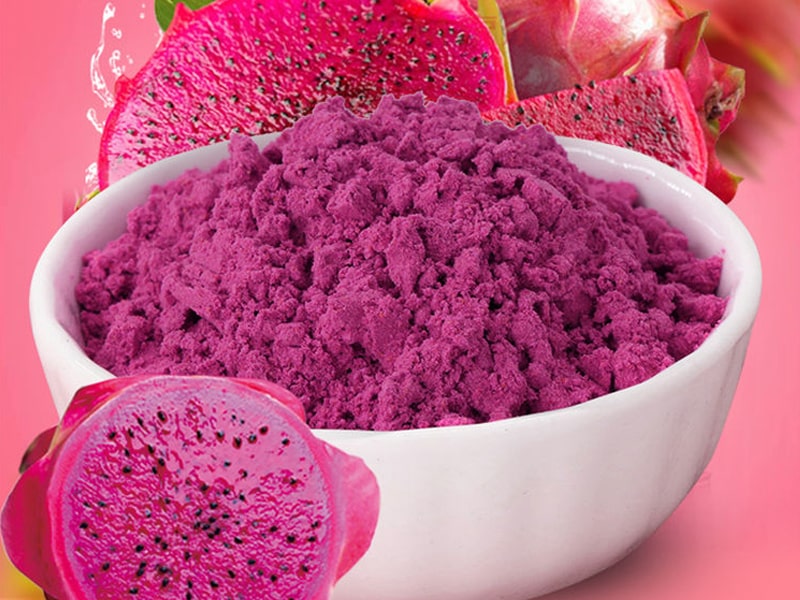 |
| Dragon Fruit Pitaya Powder |
Nutritional Profile and Benefits
Dragon fruit (pitaya) powder is lauded for its nutritional richness. It retains the key nutrients of the fresh fruit, offering dietary fiber, essential vitamins, and plenty of antioxidants. For example, dragon fruit is a good source of vitamin C, which supports the immune system and skin health. It also provides B vitamins and minerals such as magnesium and iron (the fruit is known to contain more magnesium than many other fruits). One cup of fresh dragon fruit may contain around 7.7 mg of vitamin C and notable amounts of magnesium, which generally carry over into the powder form when properly produced.
Perhaps most importantly, dragon fruit powder is rich in antioxidants – including vitamin C, betalains, and carotenoids – that help neutralize harmful free radicals in the body. Studies suggest that these antioxidants can support overall health, potentially protecting the heart, liver, and brain and even lowering blood sugar levels. In practical terms, consuming dragon fruit powder adds fiber and micronutrients with very few calories, making it popular for health-conscious diets.
● Dietary Fiber: Pitaya powder contains significant fiber from the fruit’s flesh and seeds. High fiber helps digestive health and can promote a feeling of fullness. As one source notes, dragon fruit powder is essentially “a fiber feast,” aiding gut health and digestion.
● Immune Support: Vitamin C in the powder boosts the immune system. Health experts note that the antioxidants (including vitamin C and carotenoids) in dragon fruit can help defend white blood cells and reduce inflammation. Regular intake of nutrient-dense powders like pitaya can therefore reinforce the body’s natural defenses.
● Antioxidant Protection: Dragon fruit’s pigments have strong antioxidant activity. They may help lower oxidative stress in the body. For example, researchers have found that diets high in antioxidants (like those from dragon fruit pigments) are linked to reduced chronic disease risk. The powder delivers these antioxidants in a concentrated, shelf-stable form.
● Low-Calorie Nutrition: Dragon fruit powder is low in calories but high in nutrients, making it a “nutritional pantheon” as one blog described. It lets consumers enjoy sweetness and natural fruit goodness without the sugar load of juices.
● Versatility: While not a direct health “benefit,” it’s worth noting that pitaya powder is versatile. It can be mixed into smoothies, teas, yogurts, baked goods, or even natural cosmetics. Its uses mirror those of other freeze dried fruit powders and dried fruit powders, making it easy to incorporate into diverse recipes.
Overall, dragon fruit powder can be considered a functional superfood ingredient. It supplies fiber, vitamins, and bioactive compounds in an easy form. As Healthline notes, adding dragon fruit (and its nutrients) to one’s diet can be a delicious way to support health and variety.
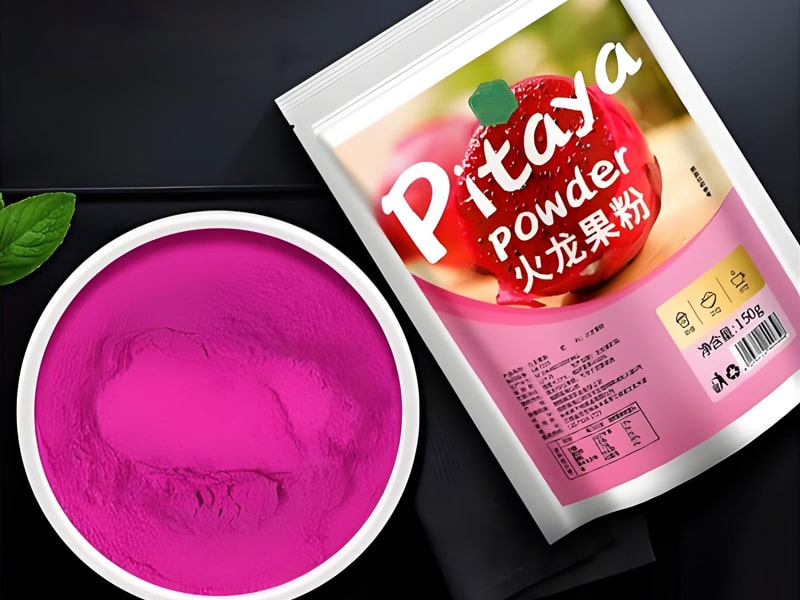
How Dragon Fruit Powder Is Produced
The production process of dragon fruit powder involves several careful steps to ensure quality, flavor, and nutrient retention. Food scientists and manufacturers typically break it down as follows:
1. Raw Material Selection: Only high-quality, ripe dragon fruits are chosen. They should be full, bright in color (red or white varieties), and free of damage. The fruit’s natural sweetness and nutrient levels peak at full ripeness.
2. Washing and Preparation: Selected fruits are thoroughly washed to remove dirt and pesticides. The thick outer skin is peeled off. The inner flesh is separated from the skin and the small black seeds are left in (the seeds provide fiber and no known toxins). At this stage, the fruit may be cut into uniform slices to speed up the drying process.
3. Drying (Dehydration): This critical step removes moisture to stabilize the fruit for grinding. Several drying methods are used:
● Freeze-drying (Lyophilization): The fruit slices are frozen and placed under vacuum, where ice sublimates (turns to vapor). This gentle method preserves texture, color, flavor, and nutrients very effectively. Freeze-dried dragon fruit pieces remain lightweight and retain most of the original vitamins and antioxidants. However, freeze-drying is energy-intensive and often more expensive.
● Spray-drying: Less common for whole fruit but sometimes used for fruit juice concentrates. The fruit (or juice extract) is sprayed into a hot chamber, quickly evaporating water and leaving a fine powder. It’s fast and cost-effective at scale but can reduce some heat-sensitive nutrients. It typically produces a lighter-colored powder.
● Oven or Dehydrator Drying: Fresh slices are placed in a drying oven or specialized dehydrator at controlled temperatures (often around 50–60°C) for hours. This is straightforward and energy-efficient. The process may darken the fruit slightly and cause some nutrient loss (e.g. vitamin C degrades with heat), but it requires no special equipment beyond an oven. Dehydrator drying provides consistent drying conditions.
● Sun Drying: Traditional method using sunlight. Fruit slices are laid out on trays under clean, screened covers. This is inexpensive but slow and weather-dependent. Sanitary issues (dust, insects) must be managed. Sun drying can also degrade color and nutrients if not carefully monitored.
In modern facilities, freeze-drying and controlled dehydrators are preferred for premium fruit powders. In fact, companies highlight that freeze-drying “helps to preserve more of the nutrients, while spray-drying is more cost-effective for large-scale production”. For high-end dragon fruit powder (like organic or “superfood” grade), freeze-drying is often used despite the cost.
4. Grinding (Milling): Once fully dried, the fruit pieces become very crisp. They are then ground into fine powder using grinders or pulverizers. The goal is a smooth, consistent texture without large chunks. Proper milling requires clean equipment (to avoid contamination) and usually passes through sieves to achieve uniform particle size. A fine powder ensures easy mixing in foods and uniform flavor distribution.
5. Packaging of the Powder: The fresh powder is immediately packed into containers or bags. This step is crucial for preserving quality. Because dried powders are hygroscopic, they absorb moisture quickly, so they must be packaged airtight and moisture-proof. Manufacturers often fill the powder into sealed pouches, jars, or sachets using powder packaging lines. The packaging materials are selected to block air and light (metalized films or high-barrier plastics). Labels are then applied, listing ingredient (“100% dragon fruit powder”), net weight, expiration date, and any certifications. Good practice is to pack under a dry, clean atmosphere (some lines flush with nitrogen) to reduce oxidation.
6. Quality Control: Throughout production, quality checks are done. This includes testing moisture content (to ensure it’s low enough, e.g. <5%), checking microbial safety, and verifying nutrient specs. Many manufacturers follow HACCP or ISO food safety standards. Only batches that meet strict criteria (color, taste, microbial counts) are approved. This ensures, for example, that a pitaya powder marketed as freeze-dried retains the expected natural magenta color and potency.
Each of these steps is guided by food science. The result is a shelf-stable dried fruit powder that captures the essence of dragon fruit. By controlling drying temperature, equipment, and packaging, producers ensure the powder remains a healthy, high-quality ingredient for end users.
Packaging and Preservation of Fruit Powders
Effective packaging is essential for any dried fruit powder, and dragon fruit powder is no exception. Because the powder has a high surface area and contains natural oils and nutrients, it must be protected from oxygen, light, heat, and moisture. If exposed, the powder could clump, lose color, or spoil. That’s why packaging uses materials with excellent barrier properties (like laminated plastic or foil pouches).
For example, stand-up pouches with zip locks are popular. They allow the consumer to reseal the package after opening. These pouches are typically filled by an automated line: a vertical form-fill-seal (VFFS) machine forms the pouch from a flat film roll, fills it with a precise amount of powder, and then seals it. The pouch may then be labeled and boxed. Alternatively, powders can be packed into small jars (with screw lids) or single-serve sachets, depending on the market.
In larger scale, pitaya powder might be bulk-packaged in Mylar bags or drums for industrial use. Regardless of format, the goal is to maintain freshness. As one manufacturer notes, packaging must protect the powder from moisture, light, and air to maintain freshness and shelf life. Often, companies add oxygen absorbers or flush with inert gas (nitrogen) inside the package before sealing. This step helps keep the powerful antioxidants in dragon fruit powder from degrading.
From an environmental and cost standpoint, vacuum-packed or nitrogen-flushed packaging also extends the shelf life significantly (often 1–2 years) by preventing microbial growth and oxidation. This aligns with sustainable practices: longer shelf life means less food waste. A bonus is that dried powders require far less cold storage than fresh fruit, so the overall energy used (beyond the drying process itself) is often lower for powder than for refrigerated produce.
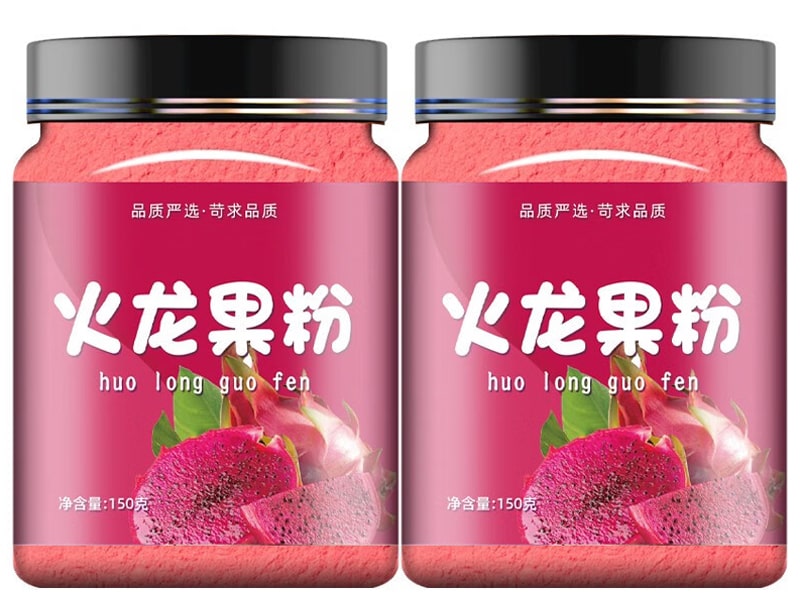 |
| Dragon Fruit Pitaya Powder-jar packaging |
Powder Packaging Machines and Technology
Modern manufacturing of dragon fruit powder relies on specialized powder packaging machines. These machines automate the filling and sealing of bags, sachets, or containers with precise portions of the powder. A common setup is an auger filler integrated with a form-fill-seal system. An auger filler uses a rotating screw to dispense an exact volume (or weight) of powder into a bag. This technology is ideal for fine, free-flowing powders like pitaya. For example, one industry supplier explains that an “auger powder filler and a vertical form-fill-seal machine ensure products like sugar, powdered milk, detergent, and flour are packaged accurately”. Dragon fruit powder behaves similarly to these common powders, so the same machines apply.
In a typical line, a reel of plastic film is formed into bags by the form-fill-seal (FFS) machine. At the same time, the auger filler, positioned above, drops a precise amount of powder into each bag before the bag is sealed. This method can create pillow bags, gusseted bags, or stand-up pouches on the fly. The advantage is speed and consistency: thousands of packets can be filled per hour with minimal human handling. Alternatively, many producers use premade pouch fillers. In this case, pre-formed stand-up bags (sometimes with zippers) are fed into a filling station. An auger or cup-filler deposits the powder, then a sealing unit seals the pouch. Such machines can even insert scoops or measure-atached spoons before sealing, improving convenience for consumers.
Beyond bags, container fillers are used if the powder is shipped in jars or tubs. Automatic powder filling machines can precisely fill jars, bottles, or cans. These machines often include capping and labeling stations. When bulk packaging dragon fruit powder, large filling machines with weigh platforms or volumetric dosing can pack significant quantities into drums or bulk bags. The key point is that efficiency and precision are paramount: automated machines reduce spillage and waste, and they ensure each pack has the correct weight, which is crucial for compliance and customer trust.
Overall, any line designed for dried fruit powder packaging will emphasize hygiene (easy-to-clean stainless steel surfaces), dust control (suction systems to capture airborne powder), and gentle handling (to keep the color and texture intact). Machine manufacturers highlight features like quick changeovers (to switch between sizes), touch-screen controls, and integration with checkweighers or metal detectors. As one manufacturer notes, modern dry powder filling machines not only increase speed but can “streamline your production”, making packaging operations more efficient. In other words, investing in the right powder packaging machine ultimately lowers labor costs and reduces product loss, while maintaining the quality that customers expect from a superfood product.
Key examples of packaging equipment include:
● Auger Fillers: For accurately dosing powder into bags or containers. They handle products like flour, spices, and fruit powders.
● Vertical Form-Fill-Seal (VFFS) Machines: For creating and sealing bags in one continuous process. Often paired with auger fillers for powdered foods.
● Premade Pouch Fillers: Systems that fill pre-made stand-up pouches or sachets, often with a zip lock or screw cap.
● Vial/Jar Fillers: When dragon fruit powder is filled into bottles or jars, machines can dose and cap containers (common in nutraceutical lines).
● Case Pack and Palletizers: At the end of the line, machines that box up the filled pouches/jars and stack them on pallets for shipping.
These technologies ensure that from the production floor to the consumer’s home, the vibrant pink dragon fruit powder remains protected and pure. With precision feeders and form-fill machines, packaging lines can handle exotic ingredients just as well as common ones. The packaging step truly brings together the science of food preservation and the art of industrial automation.
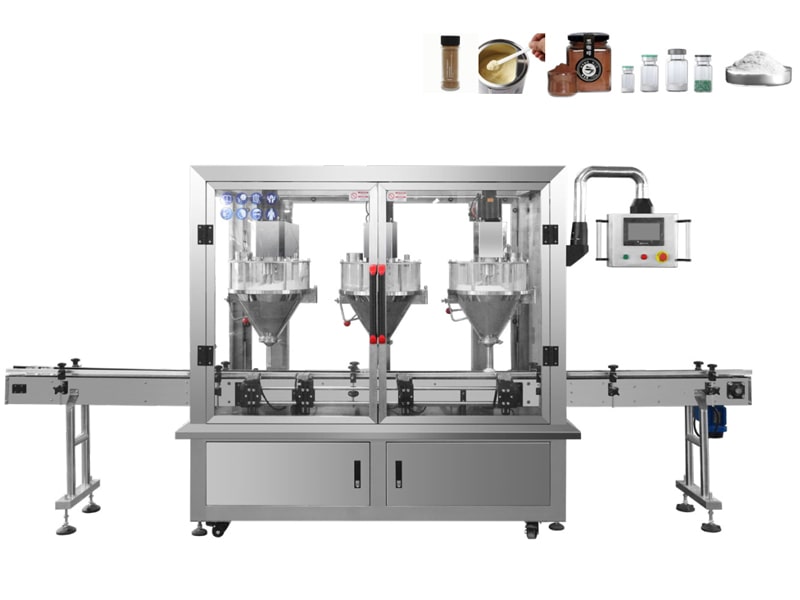 |
| Dragon Fruit Pitaya Powder Packaging machine |
Uses of Dragon Fruit Powder
Beyond health benefits and packaging, it’s useful to know how pitaya powder is used. Because of its sweet, mildly tangy flavor and striking color, dragon fruit powder finds a variety of applications:
● Smoothies and Beverages: One of the most popular uses. Just a teaspoon or two can turn a smoothie bowl or smoothie drink bright pink, adding flavor and nutrients.
● Baking: Powder can be mixed into cakes, muffins, cookies, or pancake batter to infuse a natural fruit flavor and color. For example, making dragon fruit muffins or pink-tinted waffles.
● Yogurt and Oatmeal: Stirring powder into yogurt or oatmeal adds a nutrition boost and flavor. It also makes for Instagram-worthy appearances.
● Desserts and Sweets: Ice creams, yogurt popsicles, and candy can incorporate pitaya powder as an all-natural coloring/flavor agent.
● Nutraceuticals and Supplements: The powder can be encapsulated or tableted as a dietary supplement. It’s common in smoothie packs, energy bars, or herbal supplement blends.
● Cosmetics and Foods Coloring: Surprisingly, food-grade dragon fruit powder can be used in cosmetics (like soaps or bath bombs) or as a natural dye because of its vibrant hue.
In all these uses, the one constant is that the powder must be high-quality: free from additives, uniformly ground, and properly packaged. That’s why we emphasize the careful production and packaging process above. A well-made dragon fruit powder will dissolve smoothly, taste fresh, and deliver the expected pink color without clumping or settling.
Conclusion: The Sweet Science of Pitaya Powder and Packaging
Dragon fruit (pitaya) powder exemplifies how modern food science turns fresh produce into a convenient, long-lasting product. By carefully selecting ripe fruit, drying it (often through advanced methods like freeze-drying), and milling it into a fine, nutrient-rich powder, producers create a versatile superfood ingredient. As we have seen, pitaya powder is celebrated not only for its taste and striking color, but also for its fiber, vitamins, and antioxidants that support health.
However, making the powder is only part of the process. Equally important is how it is packaged. Using specialized powder packaging machines – from auger fillers to vertical form-fill-seal systems – manufacturers can fill bags and containers efficiently, maintaining freshness and quality. Airtight, moisture-proof packaging preserves the powder’s pink pigment and nutrients, ensuring consumers get the full benefit of this exotic fruit.
Whether you are a food scientist, a baker looking for a natural colorant, or a packaging engineer, the story of dragon fruit powder bridges nutrition and technology. In the end, every bag of pitaya powder on the shelf reflects a chain of careful choices: from sunlit orchards (or glassy greenhouses) to cutting-edge drying equipment and finally to precise packaging lines. The result is a little pouch of powder that packs a big punch – in flavor, nutrition, and visual appeal.
Frequently Asked Questions (FAQ) about Dragon Fruit Pitaya Powder Packaging
1. What is dragon fruit (pitaya) powder?
Dragon fruit powder is the dehydrated, milled form of dragon fruit pulp (white- or red-fleshed). After washing, peeling, and slicing the fresh fruit, it's dried—commonly via freeze-drying or dehydrators—then ground into a fine, vibrant powder. This process preserves its natural color, flavor, and nutrients.
2. What are the main health benefits of pitaya powder?
Pitaya powder delivers a potent dose of fiber, vitamin C, magnesium, iron, and antioxidants (including betalains and phenolic compounds). It supports gut health, immunity, blood-sugar regulation, and may provide anti-inflammatory benefits and improved circulation.
3. Why choose freeze-dried dragon fruit powder?
Freeze-drying removes water via sublimation in a vacuum, retaining maximal nutrients, flavor, color, and structure—much more effectively than heat-based drying . The result is a vibrant, nutrient-dense powder that resists degradation.
4. How should pitaya powder be stored for optimal freshness?
Store in airtight, moisture-proof packaging—such as metalized foil pouches or sealed jars—away from light and humidity. Added features like nitrogen flushing or oxygen absorbers also help preserve color and potency by minimizing exposure to oxygen and moisture .
5. What packaging materials work best?
High-barrier laminated films, Mylar pouches, or rigid jars with tight seals are ideal. These materials effectively block moisture, light, and oxygen. Stand-up pouches with zip-lock features are popular for consumer convenience. Industrial-scale packaging may include trays or drums.
6. What’s involved in powdered product packaging?
Automated lines often use auger fillers integrated with vertical form–fill–seal (VFFS) machines to form, fill, and seal bags seamlessly. For pre-made bags, systems like Star Auger + Swifty Bagger precisely fill pouches before sealing .
7. How do you prevent clumping and color degradation?
Avoid moisture ingress by using dry environments and moisture-proof packaging. Adding desiccants or nitrogen flush further prevents degradation. Additionally, minimizing exposure to light and oxygen—critical for betalain pigments—helps maintain color vibrancy.
8. Can dragon fruit powder be used as a natural colorant?
Absolutely! The intense magenta pigments (betalains) make it an excellent natural dye for foods like smoothies, baked goods, frostings, and beverages. Just note the color may fade under high heat or in protein-rich matrices without countermeasures.
9. Are there standardized quality measures for powder?
Yes. Quality checks often include moisture content (<5 %), particle size, microbial safety, and pigment/colorimetric consistency. Compliance with food safety (e.g., HACCP, ISO) and export regulations—covering residue, labeling, certifications—is essential.
10. What packaging formats are used at different scales?
Consumer-grade formats include resealable stand-up pouches, single-serve sachets, and sealed jars. Industrial formats may involve bulk Mylar bags, lined drums, or large pouches. Packaging selection depends on end use, from retail consumption to food industry integration .
| References: | |
| 1. | What Is Dragon Fruit and Does It Have Health Benefits? ——Retrieved from:Healthline |
| 2. | Evaluation of the quality and stability of freeze-dried fruits and vegetables pre-treated by pulsed electric fields (PEF)——Retrieved from:Sciencedirect |
| 3. | Packaging of Freeze‑Dried Products ——Retrieved from:Wiley Online Library |
| 4. | Freeze drying ——Retrieved from:Wikipedia |


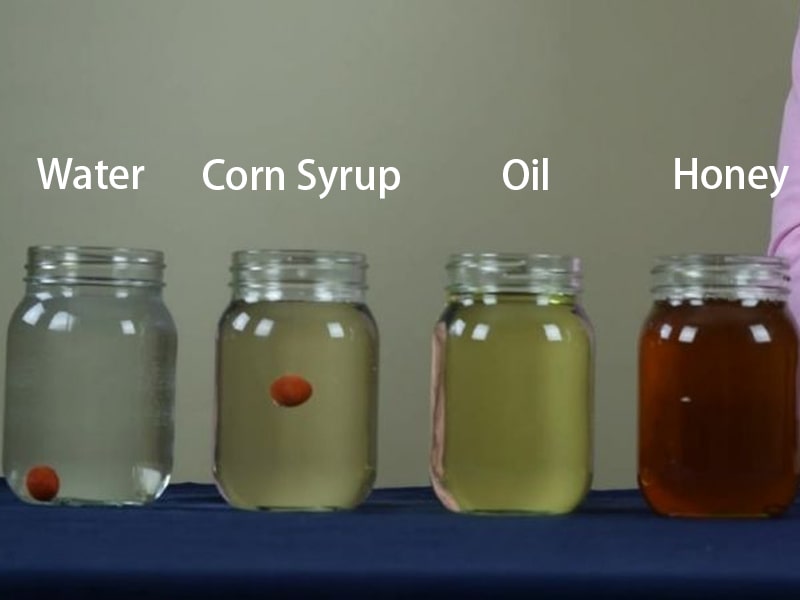

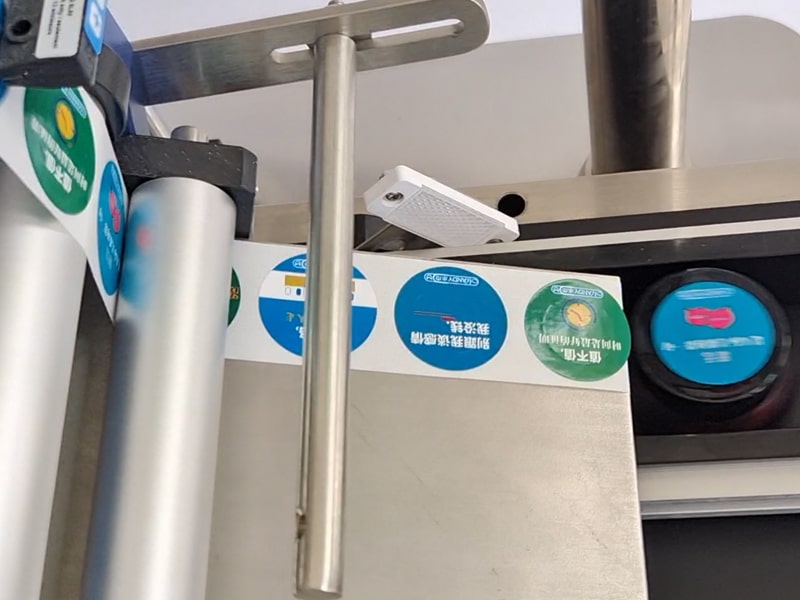

Comments